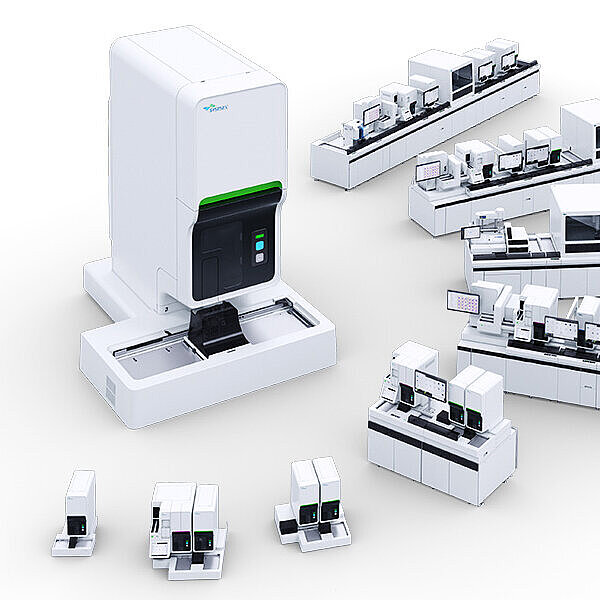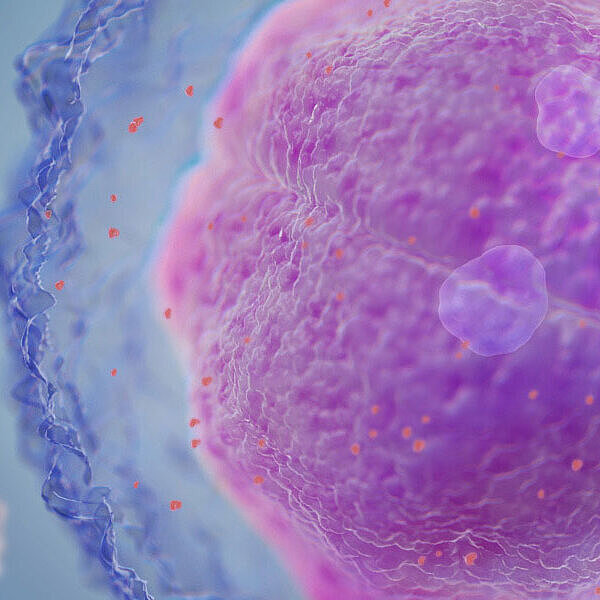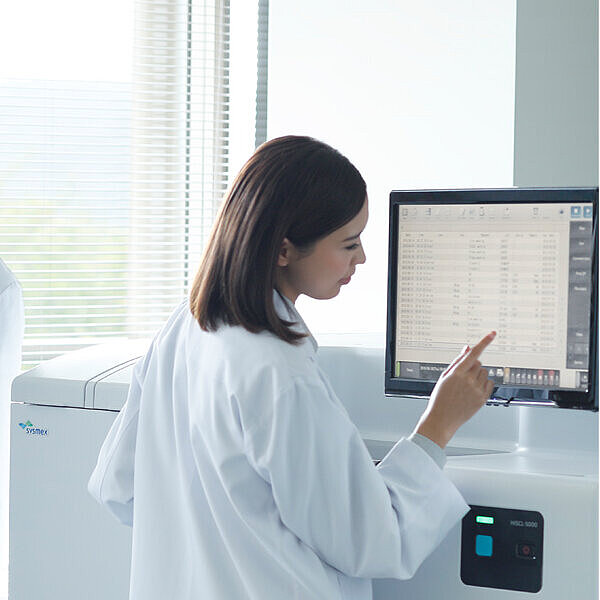An immune system reboot
Xtra article edition 2/2017
Interview: Stephan Wilk
The XN-Series with integrated WPC channel and XN stem cell application helps in finding the ideal time for stem cell apheresis.
Sysmex was in conversation with Prof. Dimitrios Tsakiris, who runs the Departments of Haemostasis and Diagnostic Haematology at Basel University Hospital
Stem cell transplantation is one of the most important therapies in the treatment of malignant haematological diseases. Stem cells are usually found in the recesses of the bone marrow. Before stem cell apheresis can take place, the donor receives a special drug (stem cell growth factor) that increases the number of stem cells and their transfer to the peripheral blood. As soon as a sufficient number of circulating cells has been reached, they can be harvested. Basel University Hospital is one of the largest centres in Switzerland for stem cell transplantation with up to 160 treatments of this kind every year. To identify haematopoietic stem cells, alongside classic flow cytometry, the Basel hospital tested Sysmex’s XN-Series with integrated WPC channel and XN stem cell application. Prof. Dimitrios Tsakiris, Head of the Department for Diagnostic Haematology, talked to us about this topic.

What is the significance of stem cell transplantation for patients with malignant haematological diseases?
PROF. DIMITRIOS TSAKIRIS: Stem cell transplantation is one of the most important therapies in the treatment of malignant haematological diseases. The concept is this: you want to eliminate a malignant tumour with strong chemotherapy. But the patients wouldn’t survive chemotherapy like that, because it would destroy their own stem cells. So, we give them back healthy stem cells, which we have harvested beforehand from other people – who are either relatives to the patients or not. These newly administered stem cells settle in the patients’ bone marrow and produce new blood cells.
What are the challenges involved in determining stem cells?
The process has certain pitfalls because we cannot give every donor the corresponding drugs spontaneously, so that we can then collect and harvest the stem cells on a specific predefined day. Everyone reacts to the stimulation differently. Some mobilise the stem cells very quickly, while others take much longer. We are forced to measure and quantify the stem cells every day once we have started the mobilisation therapy. Once these cells have reached the required number, the point has come when we can harvest. This means that the mobilisation of the donor has to be monitored and managed using a suitable monitoring method. The gold-standard method for identifying and measuring stem cells is flow cytometry, a complex process, which takes up to 90 minutes. You need caring teams for the donor, the patient and the measurement. And they have to be perfectly coordinated with each other. This is why we were interested in the option of identifying stem cells with a standardised and reliable approach, but much faster compared to the classic method. The XN analyser with the stem cell application can now offer us this option.
What were the key factors that persuaded you to opt for the XN stem cells application?
We wanted to be able to measure the stem cells in a very short time. The Sysmex solution meets this demand. And we also benefit from the other functions of the XN-Series.
What difficulties did you encounter with the present process with the CD34 analysis?
When a donor comes to us, we don’t know at first whether that person can or can’t donate on that day. Therefore, we first take a blood sample and measure the flow cytometry as quickly as we can in the laboratory, so that we can start harvesting the stem cells as soon as possible if the result is positive. With the CD34 analysis, this phase of not knowing takes about two hours. If you have a method where the information as to whether someone can or can’t donate is available after only a couple of minutes, everyone involved saves time and the process is prompt and seamless.
We estimate that we can replace about two thirds of CD34 measurements with the XN stem cell application.
As a physician, do you rely on technology to determine the time of the apheresis?
The technology allows us to quantify the cells with a high level of accuracy. There are certain international standardised procedures in place for this process. You cannot just pick a method yourself to measure stem cells. This limitation in the choice of methods is important because it means that there is a kind of harmonisation in the accuracy of the measurement across different laboratories. We estimate that we can replace about two thirds of the complex and expensive in-between measurements of stem cells with the more productive method of the XN stem cell application, if our ongoing evaluation meets the criteria. It was primarily personnel resources that drove the costs up until now.
We have talked about the clinical advantages and increased productivity, but what is the benefit for the patient?
Clearly, it’s the convenience – the donors come to us, we collect a sample of two millilitres of blood and 15 minutes later they know if they can donate or go back home. Otherwise, donors would have to wait for two hours to get either accepted for donation or told to leave and come back the next morning for the donation.
Many thanks for the meeting!


